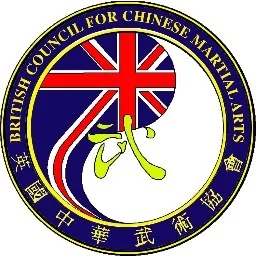Long Pole form (Luk Dim Boon Kwan)
Free-fighting and self-defence
Free-fights i.e. fights without rules, are unpredictable and volatile because they do not follow a prescribed plan and may encompass all three ranges (foot, fist, elbow/knee) and all types of technique. Once contact is made and assuming the fight is not already over (given single well-delivered bare-hand strike may easily end a fight), most martial arts choose to either break contact and step back in order to attack again (e.g. as in boxing or taekwondo), or maintain contact and grapple (e.g. as in wrestling or jiu-jitsu).
The challenge with breaking contact is that one may not have time to escape and one’s opponent has another chance to attack. The challenge with grappling is that whilst it is classically the superior art in a 1:1 situation, it is not without caveats in a no-rules mat-free environment where (1) all strikes are permitted (e.g. groin, throat and eyes) and (2) one must consider other risks (e.g. multiple opponents and weapons), which become more problematic on the ground.
For the Wing Tsun /Wing chun approach to dealing with these problems see the following page.
Classic ‘formal’ WT free fighting posture
Combat sports, martial arts and self-defence
Most martial arts:
Restrict the movements you are allowed and/or focus on a specific type of movement (for example, punching in Boxing; kicking in Taekwondo)
Are regulated competitive contact sports, designed to facilitate competition, which (rightly) bars the most lethal techniques in order to avoid serious injury.
MMA sports is as close as it gets to reality and the best route to teaching combat skill is via effective sparring (hence all MMA competitors make excellent fighters…). However, it is not pratical for the majority of people to develop the comprehensive all-round skillset (standup and ground) or fitness level needed to compete in professional combat sports relative to what is required for self-defence. In addition, many effective techniques feature heavily in combat sports that would be used with some caveats in the street: e.g. high kicking (risk of losing balance/slipping, lack of space/close quarters), takedowns/grappling (hard floors, multiple opponents, weapons, groin/throat/eye strikes permitted), etc.
In addition, mere size or strength is limited advantage in a real no-rules fight given forward striking power is not correlated with size and one cannot condition vital points like the chin, throat and groin to withstand a well-delivered bare-knuckle strike (or succession of them). Combat sports also still has some rules to prevent certain types of strikes to some of the vital areas (e.g. groin/eye, 12-6 elbow, back of the head and open hand throat strikes) and thus differs in some respects from a ‘no-rules’ streetfight.
Elbow point strikes to the head in WT
For reference the list of disallowed movements in combat sports typically includes:
No throat, groin or eye strikes
No downward strikes using the point of the elbow (‘12 to ‘6 strikes)
No small-joint manipulation
No kicking or kneeing an opponent’s head on the ground or stomping of any kind
No strikes to the spine or back of the head (of any kind)
No head-butting or biting
Some of these types of strikes (e.g. groin or eye strikes, small joint manipulation) will not deliver knockout blows or necessarily finish a fight, but may be important means of creating space or distraction to deliver others that can (e.g. bare or open handed strikes to the head, or strikes to the throat/trachea or elbow point strikes to the head/neck). In addition some of these strikes can be decisive on the ground: e.g. free use of knees or kicks to the head, whilst others can make a significant difference in defending takedowns (e.g. strikes to the back of the head or neck). Chi-sao is the reflex training exercise in WT to learn to cover and defend your own face/head and neck i.e. vertical centre line (including eyes and groin) whilst delivering counter strikes to these vital points once contact is made with an attacker (see the next page).
A brief note on the psychological aspects of self-defence
It is worth highlighting that psychology is typically of at least equal importance to knowledge of any self-defence techniques in determining the outcome of any typical unscripted confrontation e.g. being sufficiently aware to assess the situation and how to react, being prepared for the adrenalin impact, mental intimidation/misdirection and the stress of ‘fight or flight’ responses that typically arise in an unexpected attack.
Disclaimer: This site refers principally to unarmed self-defence and takes for granted all reasonable steps have been taken to avoid a physical confrontation. This is not only because violence should be avoided where possible, but because withdrawing will usually be preferable to engaging in a no-rules fight whose outcome will likely result in injury to at least one party. This is particularly the case if weapons are involved: there is no way to reliably defend against any competent attack with a bladed weapon (refer to this for some prudent advice). This site also deals minimally with the psychological aspects of combat, which are at least as important as any knowledge of techniques in determining the outcome of any unscripted fight.
A member of the British Council for Chinese Martial Arts
Part of the Tam Yiu Ming Wing Tjun Kung-Fu Academy
Please refer to the fulll site disclaimer and terms of use in Terms & Conditions. You can register for major updates to this website here or contact us here. Copyright LondonWT, all rights reserved. LondonWT and the LondonWT plum blossom logo are registered trademarks.


